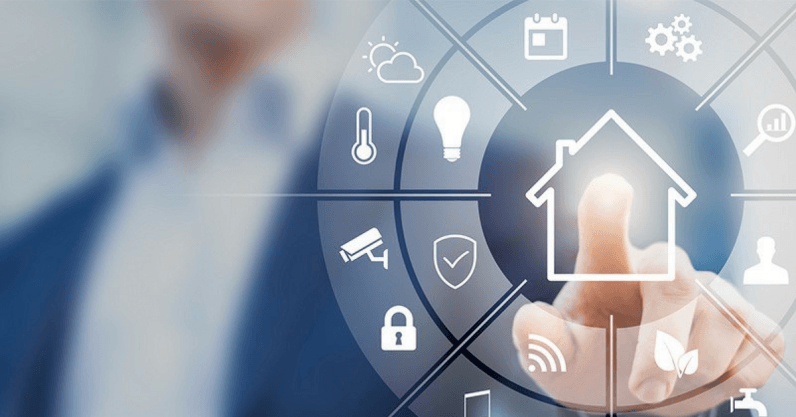Smart Technology for Your Home

Not only does it seem like we have new gadgets for communication being released on a daily basis, but smart home technology is advancing by leaps and bounds. Don’t let all of the available devices overwhelm you when you’re shopping around. Follow this guide for tips to help you get started on your smart home journey.
-
- Smart thermostats are the perfect way to get your feet wet for advanced technology in your home. They control your heat and air more efficiently by using presence sensors, and can save 10-15% on your power bill. Nest has two versions available, and prices vary $179-$250. Check with your power company to see if they offer a rebate on your new smart thermostat purchase.
-
- Keyless entry isn’t just for your car anymore. Smart locks are available for your entryways with mobile and desktop apps, so you can control them, and using fingerprint and voice recognition for opening doors. Prices vary greatly, and the choices are numerous. PCMag has made a list of the best smart locks of 2017 that can help you comparison shop.
-
- Home security systems have been around for eons, and the older brands have someone monitoring your system for you, and you pay a subscription fee. Today there are DIY security kits that will connect to your home smart system, and will alert your mobile phone app if there is a breach, but it’s your responsibility to contact authorities.
-
- Sometimes a simple security camera can give you peace of mind, and cameras are now available with motion and heat sensors so that they only turn on when you have chosen those sensor settings. These cameras have WIFI connectability, and you can use your PC or laptop to check the daily camera video.
-
- If you don’t care for a whole-house lighting control system, there are smart light bulbs controllable via Bluetooth, but that means they cannot be controlled from outside the home, or if you’re out of range. These bulbs can cost $50, but will last for twenty years.
-
- Home voice-activated assistants are becoming more popular, as well as less expensive. Apple’s Siri, Google Home, and Amazon’s Echo all have different features, but perform the same way by with voice activation. Get advice from friends and the internet before you decide which assistant is right for you and your family.
-
- Water leak and mold sensors are a very important gadget to add to your smart system. They sense water leaks, and humidity and temperature changes in your home and can save you a bundle on water or mold damage repair.
-
- No more checking smoke alarm batteries every six months--smart smoke alarms are hardwired, have built in carbon monoxide detectors, and can be controlled from your mobile phone. Some detectors even have sensibility settings, so they know the difference in a lot of smoke and your bacon getting a bit too done.
-
- Turn practically anything into a smart object with a smart plug. Once it’s plugged in to the object and connected to WIFI, you can control that object with your phone, or a home assistant.
If you have technical or more specific questions about smart products, see this article from the National Association of REALTORS’® Center for REALTOR® Technology group. It is a wealth of smart home information, as well as data issues, and ownership of devices in case of a home sale.
Courtesy of New Castle County DE Realtors Tucker Robbins and Carol Arnott Robbins.
Photo credit: thenextweb





